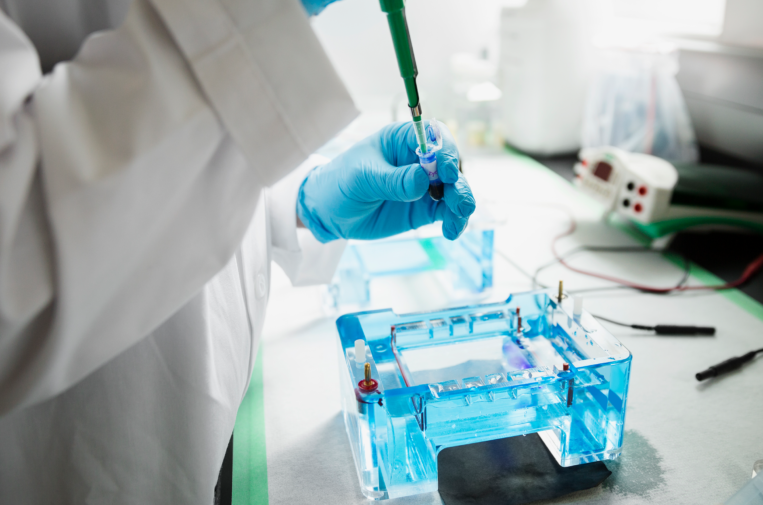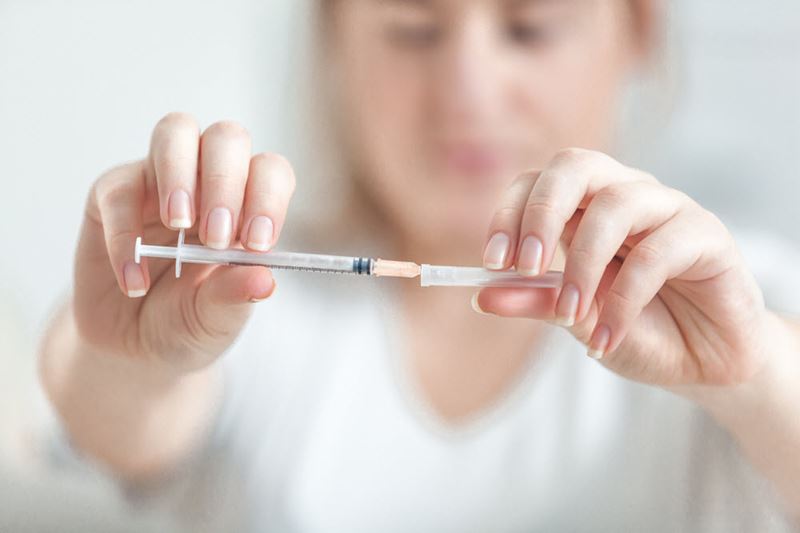If you are in the midst of fertility treatment, you are likely seeing your nurse, ultrasound technician, and physician frequently. While these important team members are all dedicated to your goal of creating a family, we’d like to tell you a bit more about the embryology team who also contributes a major part in your journey to parenthood.
Embryology teams are the specialists who work with gametes, known as oocytes (eggs) and sperm. They fertilize eggs with sperm, culture and monitor fertilized eggs to different embryonic stages of development, select the best embryo for transfer, and freeze the remaining embryos at a very low temperature in liquid nitrogen for later use. If genetic screening of embryos is requested, they coordinate PGT-A and PGT-M testing. For those undergoing egg freezing, the embryology team is responsible for freezing and thawing eggs as well as evaluating egg quality.
An experienced embryology team is paramount in the treatment process. Our embryology team has extensive experience in all aspects of their role, utilizes the latest techniques and technologies, and has the long-term insight to increase your chances of success. An embryology team is composed of embryologists with different levels of skill, proficiency, and competency. Beginning as an embryologist in training to reach the final level of an experienced embryologist can take up to four years.
To learn more about the roles and responsibilities of the embryology team, we sat down with the director of laboratory services at Fertility Centers of Illinois, Dr. Juergen Liebermann.
What kinds of procedures happen in an embryology laboratory?
The laboratory is the place where all eggs, sperm, and embryos will be retrieved, fertilized, cultured, analyzed, monitored, frozen, thawed, and cared for by a team of experts. Egg retrievals are done in private rooms located next to the laboratory by your physician.
Here are examples of procedures that happen in the laboratory. Most of these procedures happen in just 5-7 days as embryos reach the blastocyst stage, the stage at which most embryos are transferred.
- Semen analysis
- Oocyte (egg) analysis
- Intracytoplasmic sperm injection (ICSI) where a single sperm is injected into an egg for fertilization
- Embryo monitoring
- Assessment of embryo quality and potential to implant
- Embryo biopsy for genetic testing
- Coordination of embryo genetic testing
- Embryo preparation for uterine transfer
- Cryopreservation of embryos, eggs, and sperm using an ultra-fast freezing technique called vitrification
Can you tell us about your team and their credentials?
We have 13 embryologists on staff placed at different levels based on their skill, performance, experience, competency and years of seniority. The required minimal educational level is a B.S. The laboratory director must have a Ph.D. and a certification as HCLD (High-Complexity Laboratory Director) from the American Board of Bioanalysis. We also have a designated team member responsible for the secure shipping or retrieving of reproductive tissue for genetic testing.
What does a typical day look like for your team?
Usually, the day starts at 6:30 a.m. with an oocyte (egg) fertilization check for the ICSI procedures from the previous day and an evaluation of the embryos that have reached day three of development. This information goes into a daily fertilization report which will include all patients with embryos in the lab currently in culture, ranging from day one to day six or seven of development. Each team member leads a different task – one embryologist is in charge of egg retrieval, one will take care of sperm preparation for insemination of eggs by ICSI or conventional insemination, one is selecting and preparing embryos for a scheduled embryo transfer, two are thawing embryos, and the others are freezing embryos.
Parallel to egg retrieval, eggs will be frozen or thawed, and embryos will also be thawed, biopsied, and frozen. Around noon, egg retrievals are done and we start the transfers of fresh and frozen/thawed embryos. Petri dishes and cultured embryos are also prepared for the next day. After a short lunch break, eggs are fertilized via ICSI, with fertility results available within 16-18 hours. Several times per week we also receive testicular tissue from testicular biopsies to search for existing sperm, then freeze them.
What kinds of standards are IVF laboratories held to?
IVF laboratories are in charge of creating, culturing, and growing human embryos with the highest potential to implant and create a successful pregnancy. Working with embryos at this early stage of human development requires skill, proficiency, and competency as well as the experience of highly trained biologists. It also requires the highest level of ethical and moral standards. To assure quality, each IVF laboratory requires accreditation and a license to operate issued by the College of American Pathologists. This accreditation must be renewed every year with an inspection by IVF Laboratory Directors across the nation every two years.
How can patients evaluate and compare laboratories at fertility centers?
The Society of Assisted Reproductive Technologies (SART) gathers data every year from 400 IVF centers across the United States. At their website, patients have access to data by clinics submitting their data every year. The volume of an IVF center measured by egg retrievals per year is an important factor to consider. With volume comes experience and consistency which is important for successful treatment. Every single step listed earlier has to be done in a time-sensitive manner, and that’s where the experience of each embryologist kicks in. The majority of US IVF labs are working at similarly high levels, which will make it quite impossible to see significant differences in outcome in the vast majority of IVF centers.
How is the embryology laboratory involved in medical research?
As an IVF center, we participate in clinical research studies with the pharmaceutical industry and conduct in-house studies to further refine techniques and maximize the potential for a successful outcome. We are always focusing on how to be more efficient, to simplify things, and to generate higher-quality embryos with the best potential to achieve pregnancies. This can include exploring new culture media, new culture systems, incubators, and more.
How do you ensure all eggs, embryos, and sperm are safe?
The key to quality and safety is having a step by step Standard Operating Procedures in place for every procedure. Verification, identification and carefully following all SOPs is vital to creating an unbroken chain of custody. Strict quality controls, safeguards, and protocols are taken during each step of the process to ensure all egg, embryo, and sperm samples are labeled and stored accordingly. Fertility Centers of Illinois has a spotless record in this area with over 35,000 babies born over the past 30 years.
How do you work with others in the industry?
As scientists, we are always sharing medical research with the community to advance our field.
To do my part, I prepare research abstracts for meetings and travel in and outside the U.S. to share presentations as an invited speaker. I have also published books on my own and am frequently invited to create book chapters on various topics related to embryology. I also serve as an ad hoc reviewer for the leading industry medical journals such as Fertility & Sterility, Human Reproduction, and the Journal of Reproductive Medicine. To ensure our laboratory exceeds all standards, I serve as a laboratory inspector for the College of American Pathologists.







